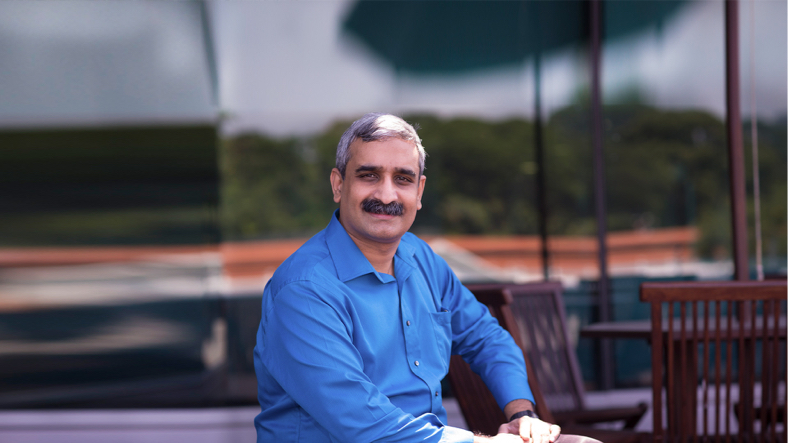
Taking research out of the classroom and into the real world can yield commercial, social and educational value.
One of the greatest challenges for any application developer is live testing – observing how their product functions in the real world, then refining it in line with user responses. Using universities and their communities as live “testbeds” can benefit not only academics and students, but society as a whole.
In the UK, the University of Nottingham has teamed up with local government and intelligent mobility pioneers, Catapult, to research and trial future smart transport and smart city initiatives – as well as position the university as leaders in the field. And in Singapore, SMU has developed a programme, the LiveLabs Urban Lifestyle Innovation Platform (LiveLabs), to develop mobile computing technologies with a real social impact.

Real Life Labs
While the campus provides fertile ground for research, SMU’s location at the heart of the city means that researchers’ testbeds often extend beyond the campus to surrounding businesses. “We’ve actually trialled our technologies at museums, at universities, at convention centres, in malls, on resort islands and in other places in Singapore,” noted LiveLabs’ Co-director, Associate Professor of Information Systems Rajesh Balan. “Singapore has this unique opportunity, where we can actually deploy at scale because people here are very willing to try new things.”
Funded by the Singapore government, the LiveLabs programme has delivered research outcomes which run from the intellectually stimulating to the commercially valuable. Programmes include a passive sensing technology to detect students experiencing stress and depression, an indoor location system that helps organisations track traffic flow through their premises, informing future design plans, and a dynamic group detector that indicates whether people are moving together with intent, delivering potential advertising opportunities.
The live testbed the university provides is invaluable to the research process. “Almost all of our research involves technologies that will actually impact people because I work in mobile systems. We are particularly focused on real-time analytics, which means we try to figure out what people are doing right now and then use that to actually improve something,” Associate Prof Balan said. “Having a real testbed allows you to engage with real people in their real use of things rather than just writing a research paper and then saying, ‘OK, done!’”
Graduate students, master’s students, undergraduates and professionals all mingle in LiveLabs’ physical laboratory; at busy times, as many as 30 individuals work together. PhD student Nur Camellia Binte Zakaria is developing a solution to identify psychologically vulnerable students and finds the community aspect of the lab invaluable. “Impactful research is not a one-man show,” she said. “To make the research impactful, it really requires an arc of advisors, experts and of course a group of students for us all to be supportive of each other.”
The live data the research yields is also helpful for undergraduate students at SMU’s School of Information Systems. “Everybody wants to do more machine learning. Everybody wants to do more analytics. So I’ve actually taken the data that comes out of LiveLabs and used it in my classes,” Associate Prof Balan said. “I give them the raw data and ask them to run their own analytics on it. So instead of studying analytics using fake data, I have them work with real data and real use cases.”
Market Values
Some of LiveLabs’ research is already moving beyond the laboratory into real-world applications, as the school begins to license its technology to start-ups. “If you want to scale up usage, you need a commercial company behind it,” Associate Prof Balan said. “Somebody who can actually take on the role of support, who can take the phone call at 3pm in the afternoon, if not 4am in the morning, and say, ‘OK, I’ll do something about that.’ Universities are not set up for that.”

One product headed for the market imminently is a mobile conference app, which allows users to view programmes, venues, speakers, attendees (and their profiles), interact socially, download ePapers, and even play icebreaker games. It’s already been used at top computing conferences and large commercial events in Singapore, but has yet to be named.
The LiveLabs approach to commercialisation is quite different from a traditional start-up model, Associate Prof Balan notes. “Most start-ups have an idea and a great marketing plan, but they usually don’t have anything built,” he said. “We have everything built and have a large user base due to our multiple real-world deployments over the last five or six years. However, we don’t have a marketing or sales plan because we’ve never actually tried to sell it.”
Commercialisation, Associate Prof Balan emphasises, is not the end goal but simply the best way to scale a project that has grown as far as it can in the lab. Even within their own campus testbed, the team are focused on ideas with social consequences. “Social impact is front and centre,” Associate Prof Balan said.
Building on the lab’s pioneering work using passive sensing to identify students with stress and depression, Associate Prof Balan hopes to tackle social mobility next. “That’s an emerging issue in society today, especially in Singapore, and I know it’s a growing issue in other parts of the world,” he said. “How do students integrate in schools? How do they mix between different peer groups? How is their social mobility being impacted based on who they hang out with?”
In this iteration of the campus as a laboratory, students, both local and international, become the subject, focus and researchers of the test, a win-win circularity that cuts to the heart of what modern education is. “We want to figure out how our students are behaving, who are the students that need help, and then figure out how to help them,” Associate Prof Balan said. “The key is not just identifying people who need help, it’s then actually going and helping them.”


